Marine animals such as whales, dolphins, and amphibians are very difficult to preserve as specimens. There is only one specimen of a blue whale in the entire world, located in Sweden.
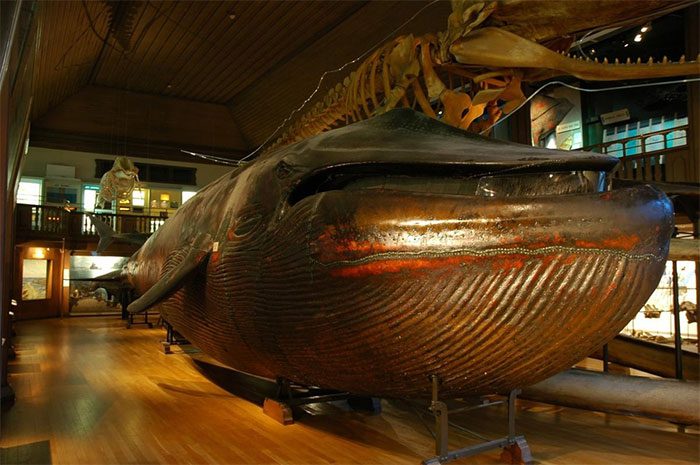
Technically, it is possible to preserve a whale as a specimen. However, whales do not have fur, so their skin will lose color and turn gray after a few years. For this reason, the specimen of Malm’s whale at the Gothenburg Natural History Museum (Sweden) is one of the rarest specimens in the world. (Photo: Bored Panda).
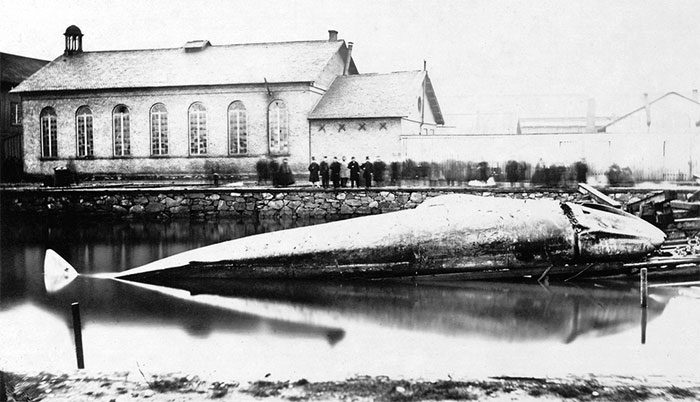
In 1865, a blue whale washed ashore near Askim, close to Gothenburg. It was about 7 months old and 16 meters long, not fully grown but large enough to cause a stir among local residents, many of whom had never seen a whale before. The fishermen who discovered the whale killed it with harpoons and axes. (Photo: Cabinet Magazine).
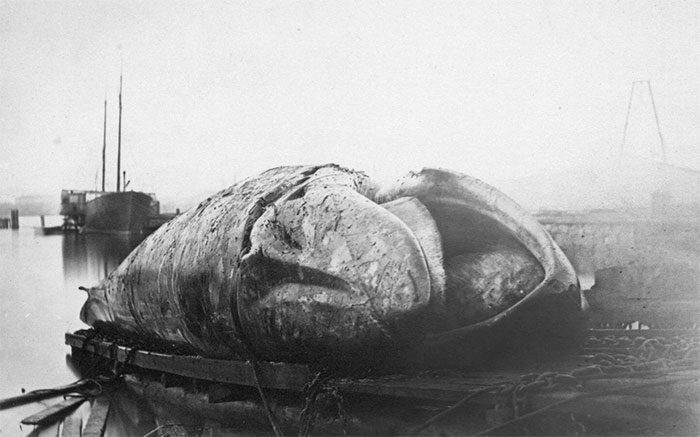
When August Wilhelm Malm, a taxidermist and curator at the Gothenburg museum, heard about the whale, he purchased it for his collection. To transport the enormous carcass to Gothenburg, they had to use three steamships and two barges, attracting a large crowd of curious onlookers. (Photo: Ecosystemsinthesky).
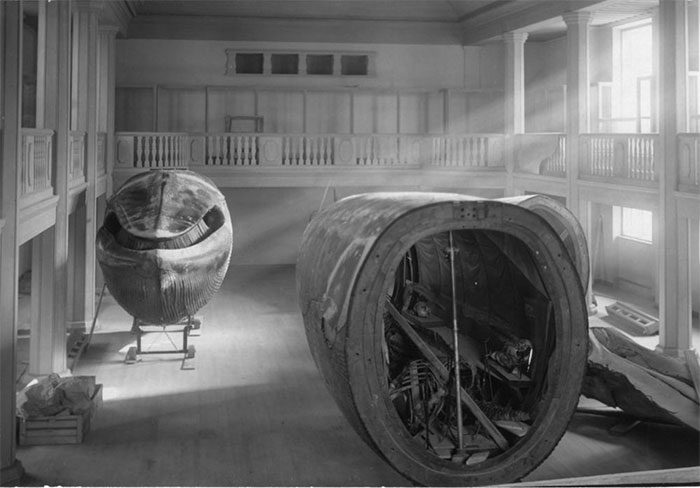
Initially, Malm only intended to keep a piece of skin for the museum, but at the last minute, he decided to preserve the entire whale. He hired a team of butchers to dissect the whale, removing the blubber and internal organs. Its parts, including the heart, one eye, the larynx, the rectum, and a portion of the intestines, were preserved in glycerin and alcohol. (Photo: Amusing Planet).
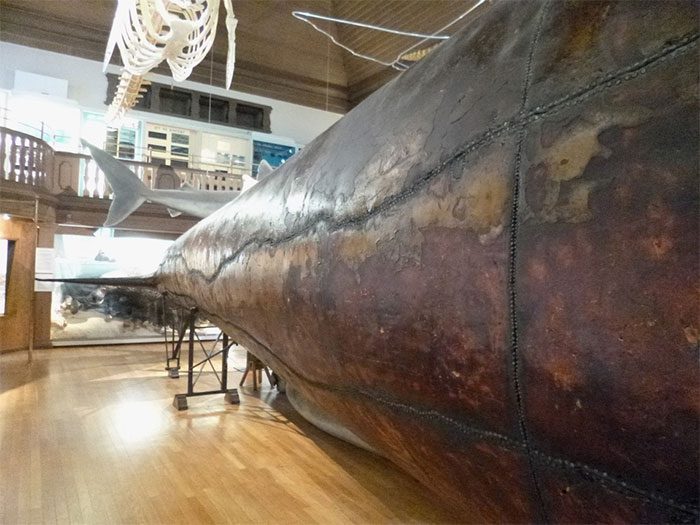
The skin was treated with salt, sawdust to absorb fat, and finely ground white clay, then saturated with arsenic solution. After drying, the skin was coated with a layer of mercuric chloride and a layer of transparent copal varnish. (Photo: WAW).
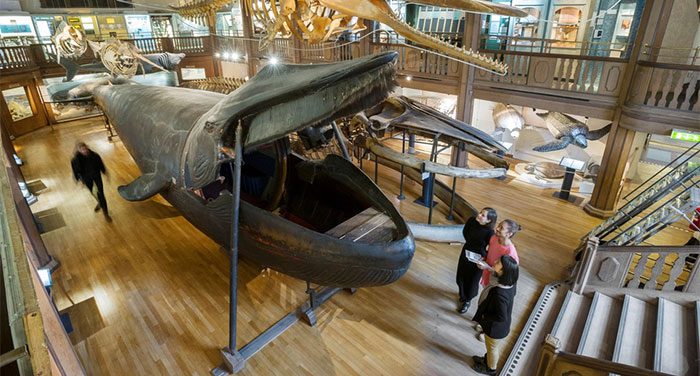
Meanwhile, a large wooden frame was constructed to replicate the shape of the whale, and the skin was stretched over this frame, secured with 30,000 metal and copper pins. The neck was fitted with hinges, allowing the jaw to open, and visitors could climb inside the whale’s belly. (Photo: DFDS).
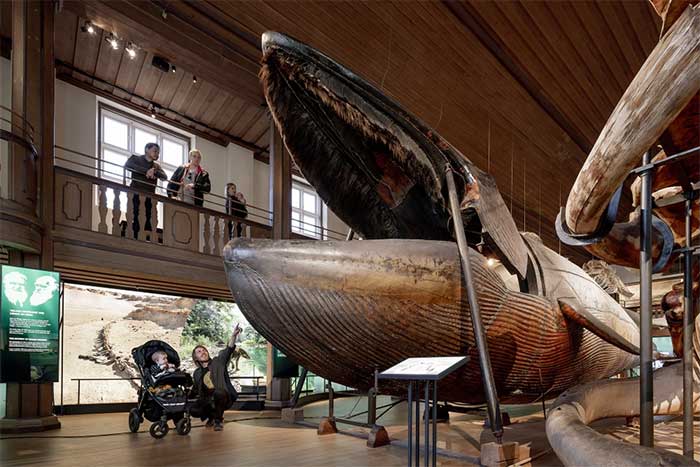
The interior of the whale was transformed into a living room with seating, carpets, and wall paintings. In the past, visitors could enter at any time. However, in the 1930s, a couple was caught having intercourse inside. After the incident, the whale’s jaw was closed and only opened on special occasions. (Photo: Ian Schemper Photography).
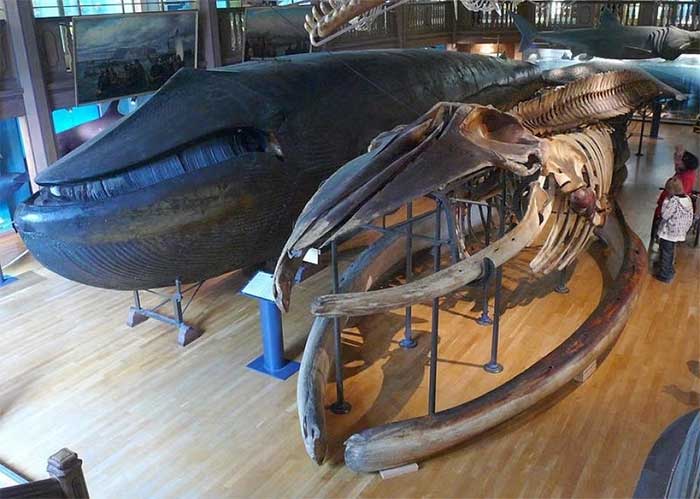
When the museum celebrated the 100th anniversary of the whale in 1965, more than 11,000 people visited in 10 days. To this day, this remains the only blue whale specimen in the world. (Photo: Gothenburg Museum).


















































